One of the most populous cities in the United States is New York. Everyone knows it thanks to the famous Statue of Liberty and the tumultuous life in Times Square. But on the other side, New York is a culturally diverse place with a thriving life: from sports to new technologies, from fashion to exciting art.
The state also conceived and gave the world an unsurpassed form of performing arts, known as the Broadway Theater. Stan is a tribute to amazing artists, who were born and raised in New York. This city, with renowned museums and Broadway theaters, has been a source of inspiration and a dream for millions of artists around the world. This article contains the famous artists of New York, the most interesting facts of their lives, and masterpieces.
George Inness (1825 – 1894) – American landscape painter, a prominent representative of tonalism. As a teenager, he worked as a cartographer in New York, where he attracted the attention of the French landscape painter Réguy François Guignot, with whom he subsequently continued his painting studies. In the mid-1840s, he attended the National Academy of Design.
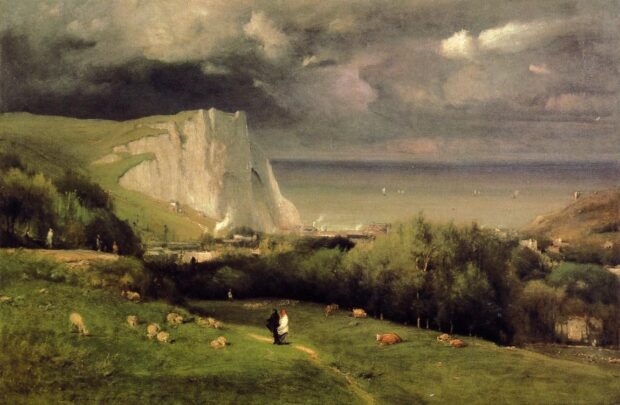
During this time, Inness opened his first art studio in New York. In 1851, Ogden Haggerty sponsored George’s first trip to Europe for painting and study, where his art style was influenced by the work of the Hudson School and of Emanuel Swedenborg. Inness is also known as the “father of American landscape painting”, thanks to his mature works, which not only personified the tonalist movement but also reflected the distinctive and uniquely American style.
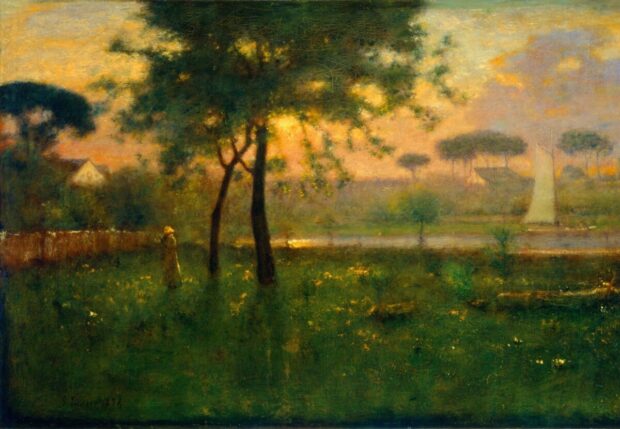
Works created in the 1870s often tended to be panoramic and scenic, topped by cloudy and menacing skies, and included views of his homeland (“Elf Ground” 1871, “The Catskill Mountains” 1870), as well as scenes inspired by numerous foreign travels, especially to Italy and France (“Etretat” 1875). In terms of composition, the accuracy of drawing, the paintings placed George Inness among the most successful landscape painters not only in New York but throughout America.
Edward Hopper (1882 – 1967) is widely recognized as the most important American realist painter of the twentieth century. But his vision of reality was selective, reflecting his own temperament in displaying empty city streets, landscapes that he chose to paint.
Painter was born in 1882 in Nyack, New. From 1900 to 1906, he studied at the New York Art School, and during his studies he switched from illustration to works of fine art. After graduating from school, he worked as an illustrator for some time; Upon completion of this career path, he made three trips to Europe from 1906 to 1910. Looking back, we can say that Europe for Edward Hopper meant France, or rather Paris. This city, its architecture, light and artistic traditions had a decisive influence on its development.
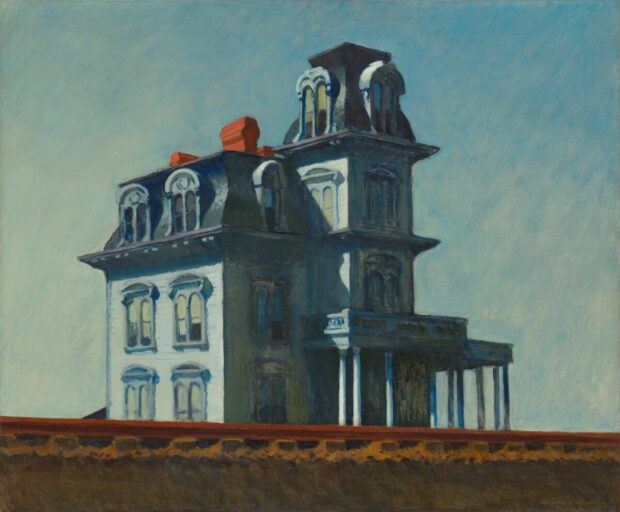
In 1919, Edward Hopper received his first open invitation to a solo exhibition of some of these finest works of art. His most famous masterpieces include “House by the Railroad” (1925), “Automat” (1927) and the iconic “Nighthawks” (1942).
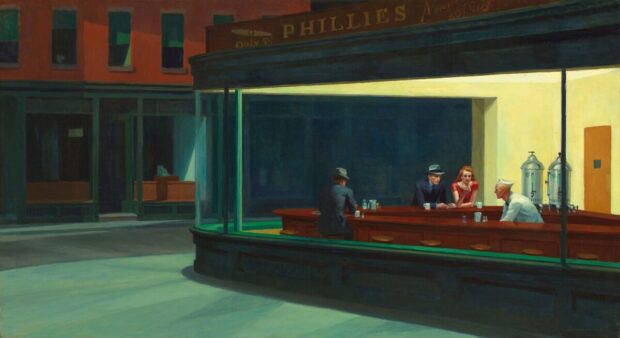
Rockwell Kent (1882 – 1971) was an American painter best known for his characteristic flowing landscape painting style. Often referred to as an early American modernist, Kent’s works focus on the otherworldly beauty of nature influenced by transcendentalism and mysticism.
Rockwell Kent was born in Tarrytown, New York and attended the School of Architecture at Columbia University. There he enrolled in evening and summer classes at renowned art schools, studying with famous artists. Kent worked as an architect for just over ten years, but during this time he made many trips all around the world, which served as a source of inspiration for his masterpieces. His paintings are highly stylized, organic forms acquire geometric qualities and contrasting color relationships.
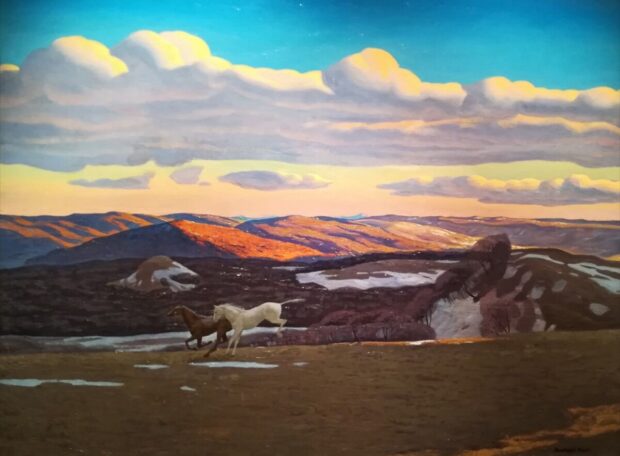
Kent’s paintings and illustrations depicting Alaska, Tierra del Fuego, Greenland and other remote places that he visited brought him great popularity thanks to his art. Rockwell`s works were collected in major museums, and his reproductions were widely reproduced during his lifetime. Rockwell Kent has also created memorable poetic illustrations for popular novels, including the works of Shakespeare and Herman Melville.
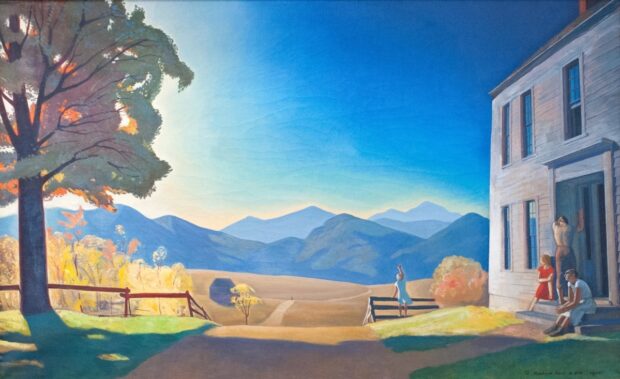
Norman Rockwell (1894 – 1978) was an American painter and illustrator known for his iconic depictions of American culture. With a myriad of favorite themes, including nuclear families, mischievous children, and small-town life, his work has gained cult status.
Rockwell was born in New York in 1894 and always aspired to be an artist. At the age of fourteen, Norman attended a painting course at the New York School of Fine Arts (known as the Chase School of Art). Two years later, he dropped out of school and studied painting at the National Academy of Design. Soon he joined the Art Students’ Association, where he studied with Thomas Fogarty and George Bridgman.
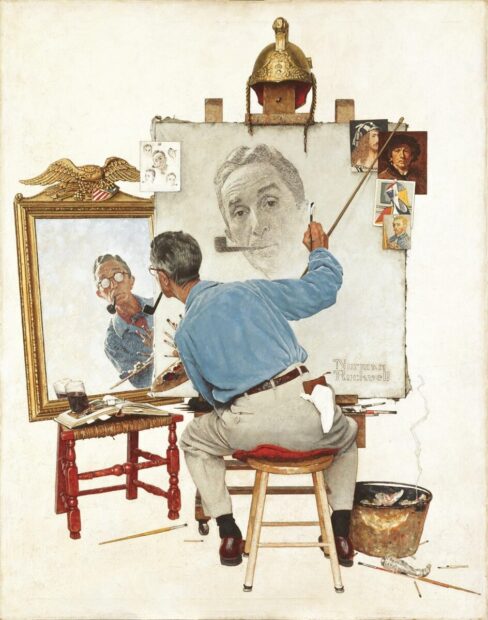
Young artist quickly achieved success. He received his first payment of four Christmas cards even before his sixteenth birthday. As a teenager, he was hired as art director for “Boys’ Life”, the official publication of Boy Scouts of America, and illustrating various publications for young people.
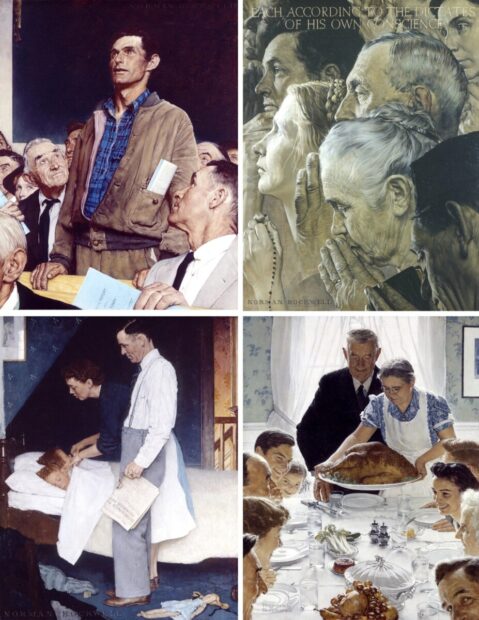
In 1943, Rockwell painted his most famous collection of paintings “The Four Freedoms”. He followed that success with other masterpieces: “Circus Barker and Strongman”, “Redhead Loves Hatty Perkins, “The Problem We All Live With” etc.
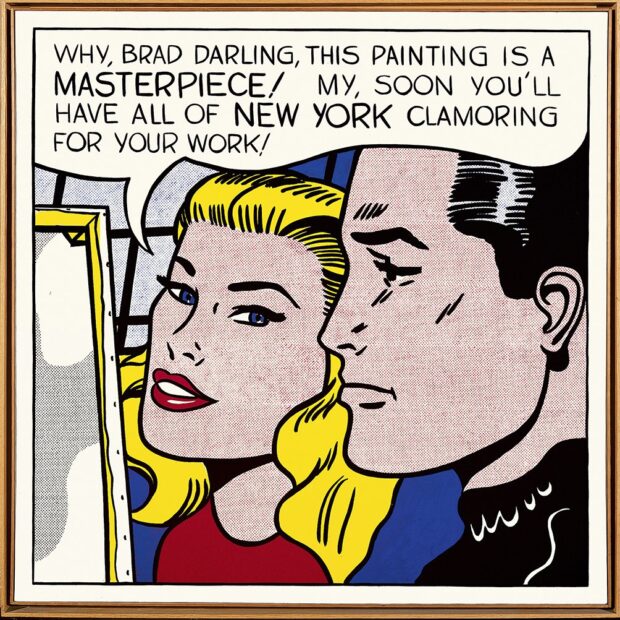
Roy Fox Lichtenstein (1923–1997) was an American pop artist who became a leading figure in the 20th century contemporary art movement. He was born in New York into the family of a successful developer. As a boy, he was interested in science and comics, and as a teenager he was fond of art. In 1937 he took watercolor lessons at the Parsons School of Design, and in 1940s at the Art Students League under the direction of the famous realist artist Reginald Marsh.
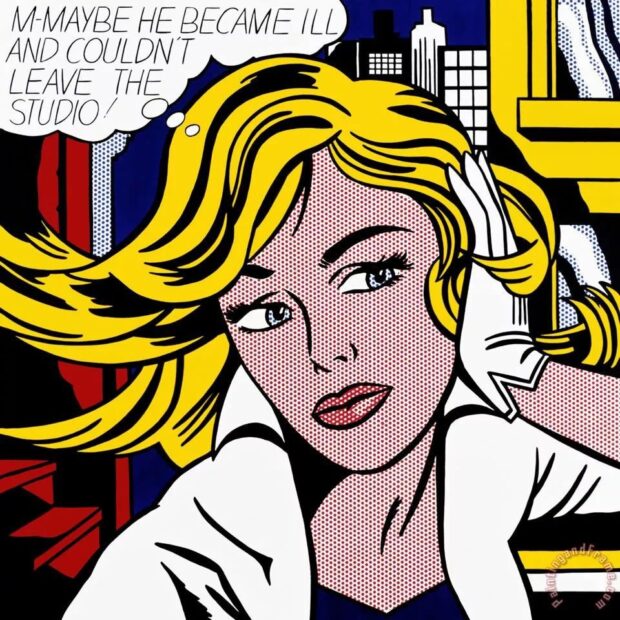
Young artist founded his inventive career on imitation, starting with borrowing images from comics and advertisements in the early 1960s, and eventually embracing images of everyday objects, art styles, and art history itself. “Whaaam!” and “Drowning Girl” are generally considered Roy’s best-known works and “Look Mickey” is considered as the most impressive his work. One of most expensive art is “Masterpiece”, which was sold for about $160 million in 2017.
Like us on Facebook for more stories like this: